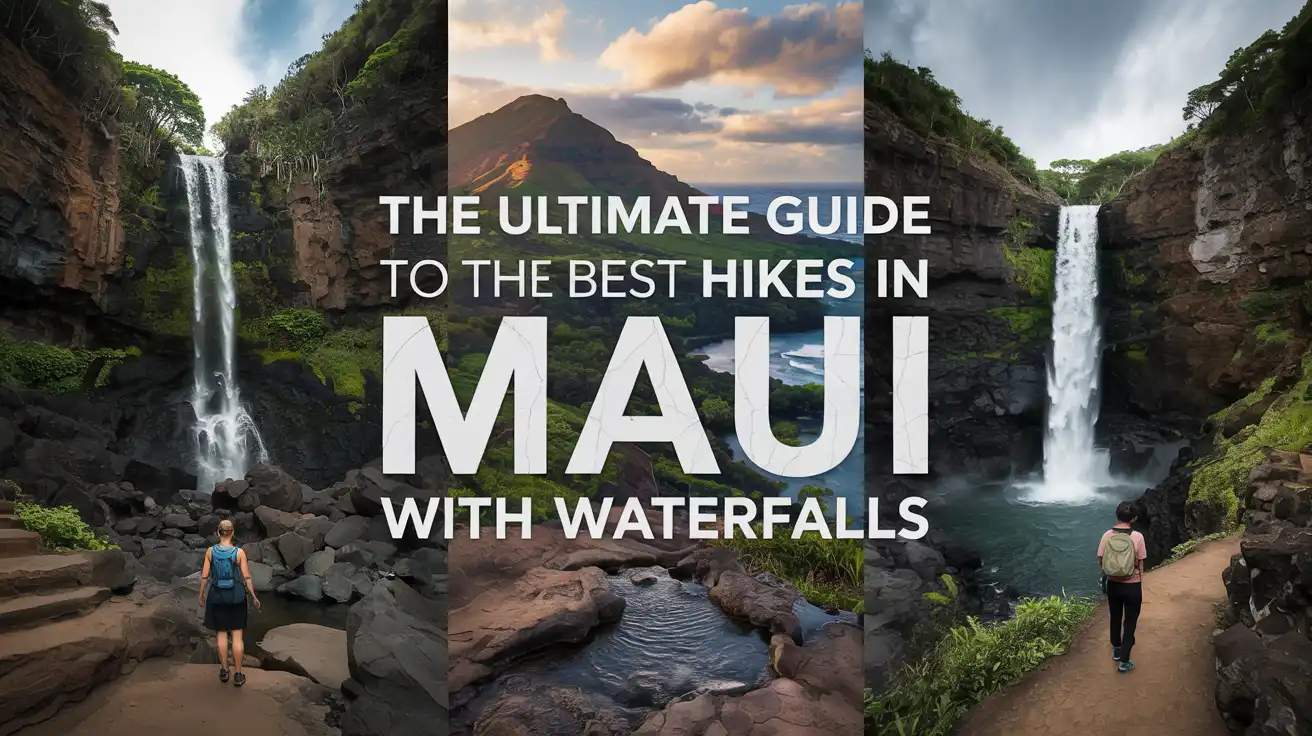
Maui’s lush landscapes and verdant landscape are home to some of the most stunning waterfalls in the Hawaiian Islands. This guide will show you the best hikes in Maui with waterfalls, from Haleakala National Park to West Maui.
These waterfall hikes offer a mix of amazing adventure and sheer beauty, perfect for any explorer seeking dramatic views or a rugged adventure.
Whether you’re looking for an unforgettable experience along the Hana Highway or a family-friendly walk near Paia Town, Maui has trails for everyone.
From hidden cascades like Alelele Falls to iconic views of beautiful waterfalls such as Waimoku Falls, these hikes are truly special, offering stunning ocean views and picturesque views.
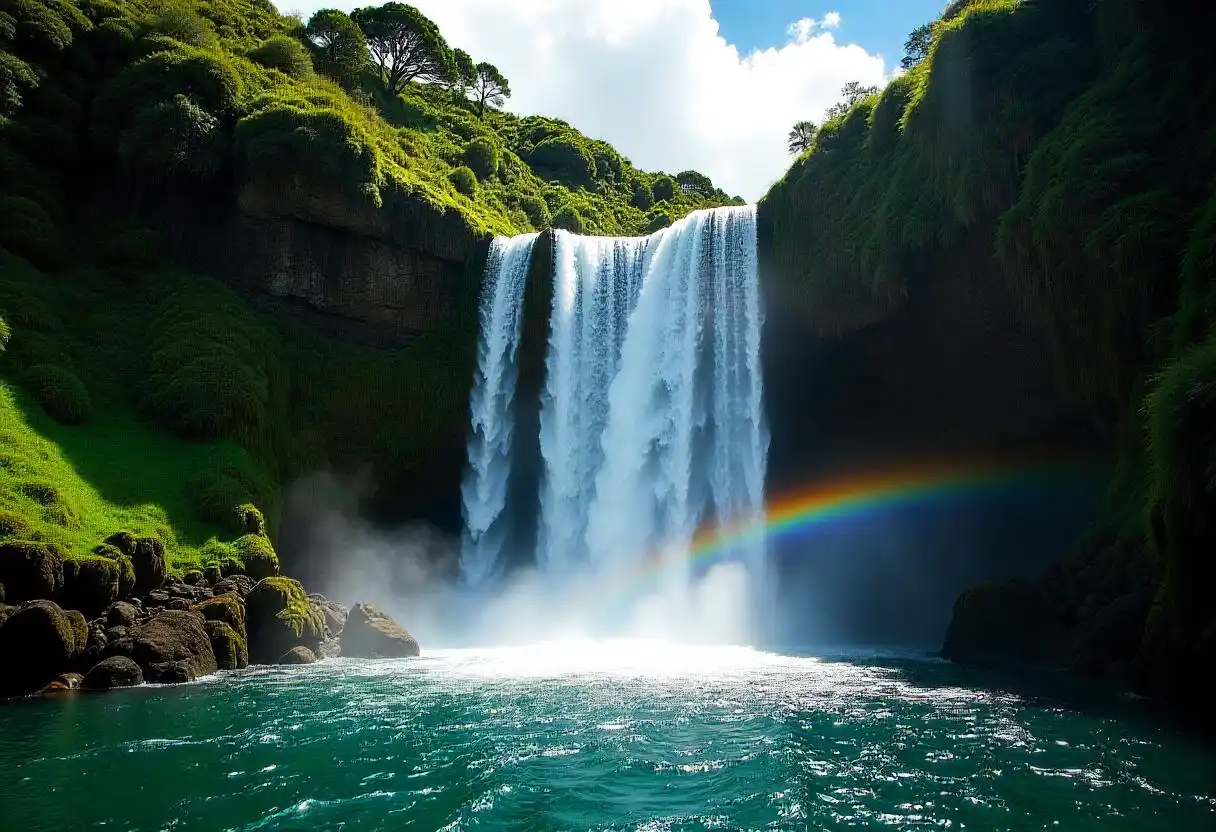
Maui’s waterfalls, like the tallest waterfalls of Honokohau Falls and the 185-foot Makahiku Falls, are more than just water falling over rugged cliffs.
They come from a mix of nature’s forces that shape the entire island, including East Maui and West Maui. Let’s see why Maui is a top spot for waterfall lovers seeking beautiful views and natural beauty.
Maui’s location in the Pacific Ocean makes it perfect for stunning 400-foot waterfalls and serene waterfall experiences. Heavy rainfall and volcanic valleys create over 300 waterfalls, from Kopiliula Falls to Punalau Falls. Trails like Pīpīwai Trail and Pipiwai take you through tropical rainforest, bamboo forests, and dense rainforest, evoking scenes from Jurassic Park.
These trails offer views of lush greenery and breathtaking two-tiered cascades. Many are waterfall accessible, so you can easily see places like Wailua Falls or the 173-foot tall Wailua Falls without tough hiking, making them ideal for casual visitors.
Maui’s lush landscape thrives in special microclimates, supporting natural landscapes. Here’s how it works:
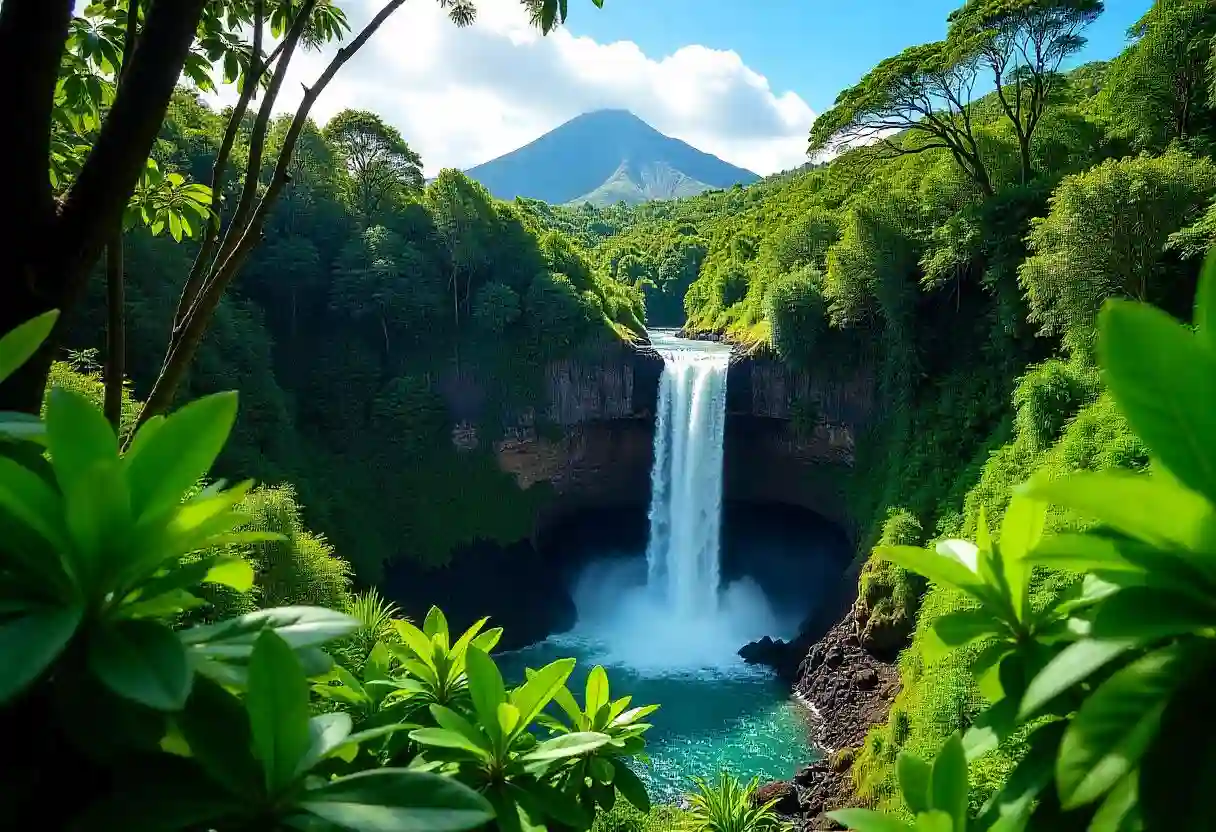
Maui is special because of its stunning beauty and easy access.
Let’s compare Maui to its neighbors:
| Factor | Maui | Oahu | Kauai |
| Trail Accessibility | Many hikes under 2 miles like like Ohai Trail | Iconic spots like Nuuanu require long hikes | Most trails are steep |
| Surroundings | Pristine beach like Kaanapali Beach | City views near waterfalls | Rugged coastlines |
| Scenery | Combine natural landscapes with volcanic craters | Urban meets nature | Cliffside cascades |
Maui offers a mix of rugged adventure and ease, whether you want lush landscape hikes along the Kapalua Coastal Trail or serene pools at Makamakaole Falls.
Timing is everything when you’re exploring Maui’s waterfalls, like Upper Waikani Falls or Waikani Falls. We’ll look at the best times to visit, based on seasonal considerations and weather patterns, including potential for flash flooding. These factors shape the island’s lush landscape.
| Season | Months | Highlights |
| Green Season | Nov–Jan | Heavy rains boost water levels, creating dramatic cascades. Ideal for best times of day photography at sunrise near Hosmer Grove. |
| Dry Season | Apr–Jun | Warmer temps and fewer crowds. Check travel guide updates for trail access along scenic drives. |
Always keep an eye on flash flood risks with National Weather Service alerts. After rain, water levels can rise fast—stay away from hiking if storms hit, a key safety concern. Be flexible: flights to Maui (flight times vary) get busy during peak months.
“The key is to balance chasing waterfalls with patience,” says travel blogger @IslandPaths. “Winter hikes need rain checks, but spring offers hidden gems like Alele Falls.”
Maui’s East Maui region, including Hana waterfalls, is a paradise for waterfall lovers. It offers trails for everyone, from easy walks to exciting adventures along the North Shore.
Get ready to make unforgettable memories at these top spots, like Iao Valley State Park Waterfall.
Start your adventure at Twin Falls, a popular hike 17 miles from Kahului near Paia Town. The 0.3-mile trail shows off a duo of waterfalls with graceful cascades.
It’s great for beginners, with no need for permits, convenient parking, and shaded paths through dense rainforest, offering an intimate waterfall experience.
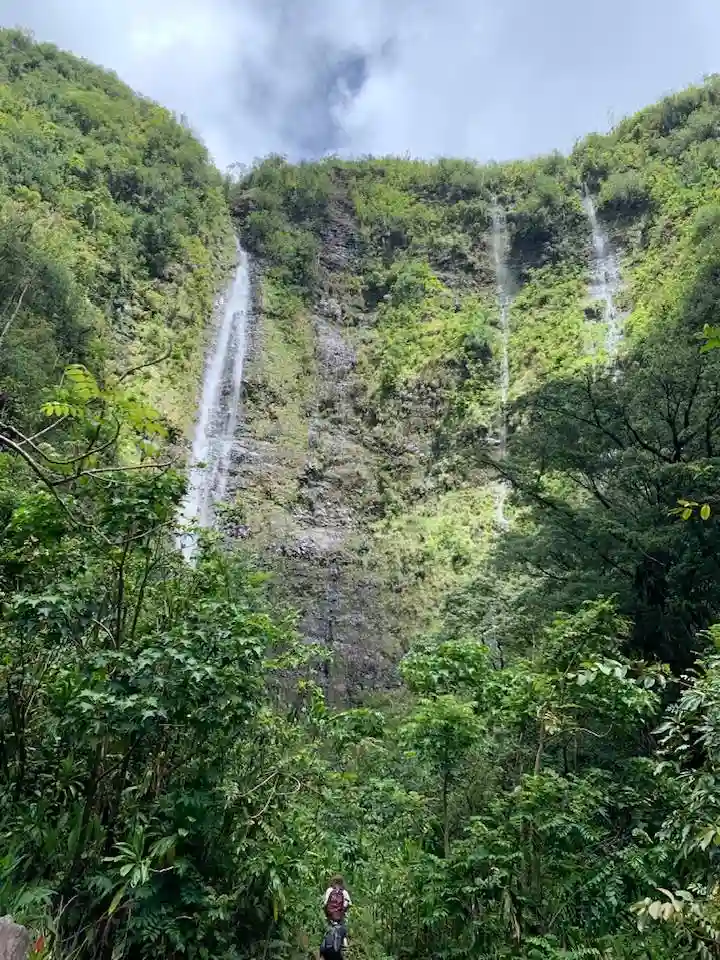
The Pīpīwai Trail takes you to the 400-foot waterfall of Waimoku Falls in Haleakalā National Park. This 2.2-mile hike goes through bamboo forests and ends at a cliffside with spectacular views.
Start early to get parking spots and see Oheo Gulch on the way, a popular spot with pool suitable for swimming.
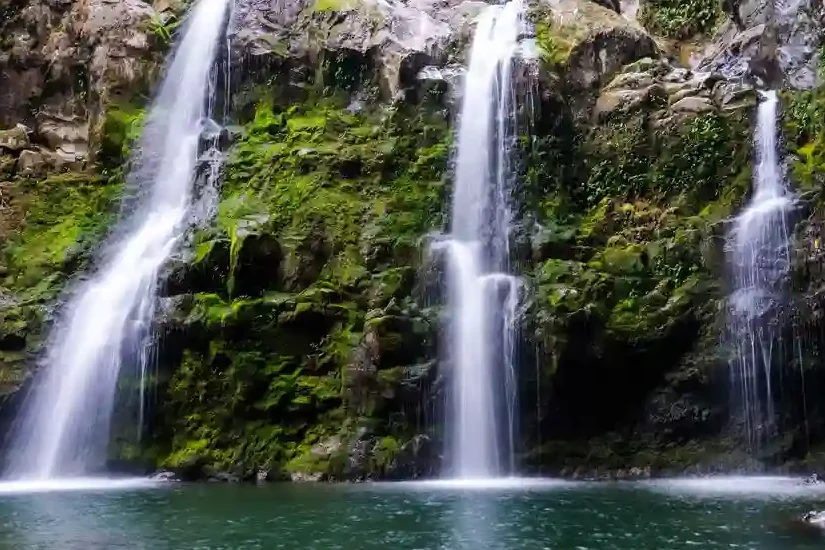
Upper Waikani Falls, also known as the Three Bears Waterfall, features three cascades of different sizes, including an 80-foot tall waterfall.
The parking lot fills up fast, but the lush valley and photo spots with picturesque pools are worth it. Look for the three falls in a serene pool, a spot for families.

Honokōhau Falls is over 1,100 feet tall, one of Maui’s tallest waterfalls. You can see it mainly by helicopter tours with Maverick Helicopters, offering aerial adventure.
After heavy rains, it’s a powerful and awe-inspiring sight. The mist from above is an unforgettable sight in this inaccessible valley.

Makahiku Falls is a 185-foot Makahiku Falls cascade on the Pīpīwai Trail. The upper trail section has this remote waterfall. But be careful, the rocks near the falls are slippery, and cliff jumping is not safe despite the pool for swimming.
Start your journey on the Road to Hana with this travel guide. The 60-mile Hana Highway is full of waterfalls at every turn, like Hanawi Falls and Waikamoi Falls. Make sure to plan well to see the panoramic views and stunning views.
Begin your trip by 7 AM to make the most of the day, leaving from the town center. The drive time one way takes 2-3 hours. So, plan for 8-10 hours for the entire time on this scenic drive.
Bring snacks like banana bread from Paia Town to keep you going. Choose 3-4 hikes, like Wailua Falls’ easy trail or Waimoku Falls’ cliffside distant views.
Don’t miss these key spots:
“Grab banana bread in Paia Town before you go—the treat keeps energy up during scenic drives to Hana waterfalls.”
Find Hanawi Falls on a 4-mile trail through dense forest, or explore Hahalawe Falls and Gulch Falls. These hidden gems are off the beaten path, like Makapipi Falls. Always respect private waterfalls signs for sustainable travel.

While East Maui’s waterfalls get attention, West Maui has its own secrets, like Makamakaole Falls. The West Maui waterfall trails offer peaceful views and fewer people.
The Waihee Ridge Trail, a 5-mile roundtrip Waihe’e Ridge Trail, takes you to Makamakaole Falls, a beautiful two-tiered waterfall. It’s a moderately rated trail with stunning ocean views.
Start early to see the sunlight on the upper falls. Then, cool off in the shaded natural pools below.
Iao Valley State Park is close by, where fascinating history meets nature at the Valley State Park Waterfall. There’s no waterfall in the park, but the misty cliffs remind you of the ones on the Hoapili Trail. This two-mile trail is shorter and goes through green valleys with picturesque views.
For a quiet beauty, try the Kapalua Coastal Trail. It leads to a secluded waterfall where the stream falls into a green valley, near Kaanapali Beach.
Don’t miss Makapipi Falls and Punalau Falls when it rains. They’re seasonal wonders with spectacular sight. Pair your hike with a visit to Kapalua’s beaches or Lahaina for a full day.
| Trail | Distance | Highlight |
| Waihee Ridge Trail | 5 miles | Two-tiered makamakaole falls |
| Kapalua Coastal Trail | 3 miles | Coastal views + hidden waterfall |
| Hoapili Trail | 2 miles | Iao Valley vistas |
Check the weather before going to West Maui. Heavy rains reveal secluded waterfall surprises, like Alele Falls. Bring travel gear like light gear and waterproof items for splashes. These trails show that adventure is about finding new things, not just how far you go, even on a mile trail.

Maui’s waterfalls, like Waikani Falls, are ready for everyone. You can find easy trails for a family day or tough hikes for seasoned adventurers along the Ridge Trail. The island offers a wide range of trails, from gentle waterfalls to challenging treks like Sliding Sands Trail.
Start with trails that are good for all ages, like Lower Waikani Falls. Places like Lower Waikani Falls have paved paths and are short, offering easy-access waterfalls. They’re great for strollers or first-time hikers visiting from the entire island.
These trails have rest areas and clear signs, perfect for family visitors. They let kids and grandparents enjoy the beautiful views without hard climbs. For a special spot, Upper Waikani offers a secluded pool after a short walk along a trail loop. It’s perfect for a picnic near a string of waterfalls.
Looking for more adventure? Try trails like Pīpīwai Trail, a 5-mile roundtrip to Waimoku Falls’ famous falls with a pool suitable for swimming.
For those who love a challenge, trails like Honokōhau Falls or Supply Trails are perfect. The 8-mile roundtrip route is tough, with stream crossings and steep drop-offs near Ho’olawa li’ili’i Stream.
The reward is a secluded 1,400-foot cascade, a larger waterfall in a forest reserve. It’s a quiet beauty away from the crowds, ideal for those seeking path charm. These hikes are not for beginners but offer unique beauty and peace with distant views.

Maui’s waterfalls, like Puaa Kaa Falls, are stunning, but it’s crucial to respect their power with safety in mind. Safety comes from knowing the risks, like the danger of flash floods, and making smart choices. These tips will help you explore safely and enjoy the path destination.
Storms can quickly turn streams into dangerous rivers, a potential for flash floods. Always check the weather and hike with a buddy during rain, especially near pristine rainforest areas. If you’re caught in rising water, seek higher ground and call for help. Remember, even if it’s sunny upstream, dangers can lurk downstream near scenic waterfall spots.
Maui’s freshwater pools, like the serene pool at Waimoku Falls, are tempting for swimmers. But, there are hidden dangers. Cold currents, sharp rocks, and sudden drops make cliff jumping risky near 100-foot waterfall sites. Before swimming, check the edges for debris and test the depth with a stick. A local ranger says,
“Never trust calm surfaces—what you can’t see can hurt you.”
| Hazard | Safety Tip |
| Hidden rocks | Stay near shorelines marked by ropes |
| Cold currents | Limit swim time to 10 minutes |
| Slippery banks | Use trekking poles for balance |
Navigation on Maui’s trails, like the Trail Loop, requires preparation for muddy paths and stream crossings. Bring waterproof boots, a map, and a whistle for trails like mile trail. For sustainable travel, carry a trash bag to protect the environment. Follow these tips:
Maui’s waterfalls, like Iao Valley State Park Waterfall, are more than just beautiful sights. They hold deep Hawaiian history and cultural significance, tied to the Hawaiian islands.
Many spots, like Oheo Gulch, tell stories of ancient Hawaiian gods and fascinating history. As you explore, remember these lands are Hawaiian islands treasures shared with visitors.
“The earth and waters are gifts from our ancestors,” says a local guide. “Tread gently to keep their spirit alive.”
Protect these spaces by:

Maui’s waterfalls, like Makahiku Falls, offer stunning views and dramatic views that every photographer wants to capture.
Whether you’re using a smartphone or a DSLR, these photography tips ensure you bring home unforgettable shots of scenic waterfalls.
Lighting makes all the difference. Try these best times of day based on waterfall orientation:
| Waterfall | Optimal Morning | Golden Hour Alternative |
|---|---|---|
| Waimoku Falls | 7:00–9:30 AM | 4:30 PM for panoramic views |
| Makahiku Falls | Sunrise to noon | Overcast days for soft light |
Incorporate these techniques to stand out:
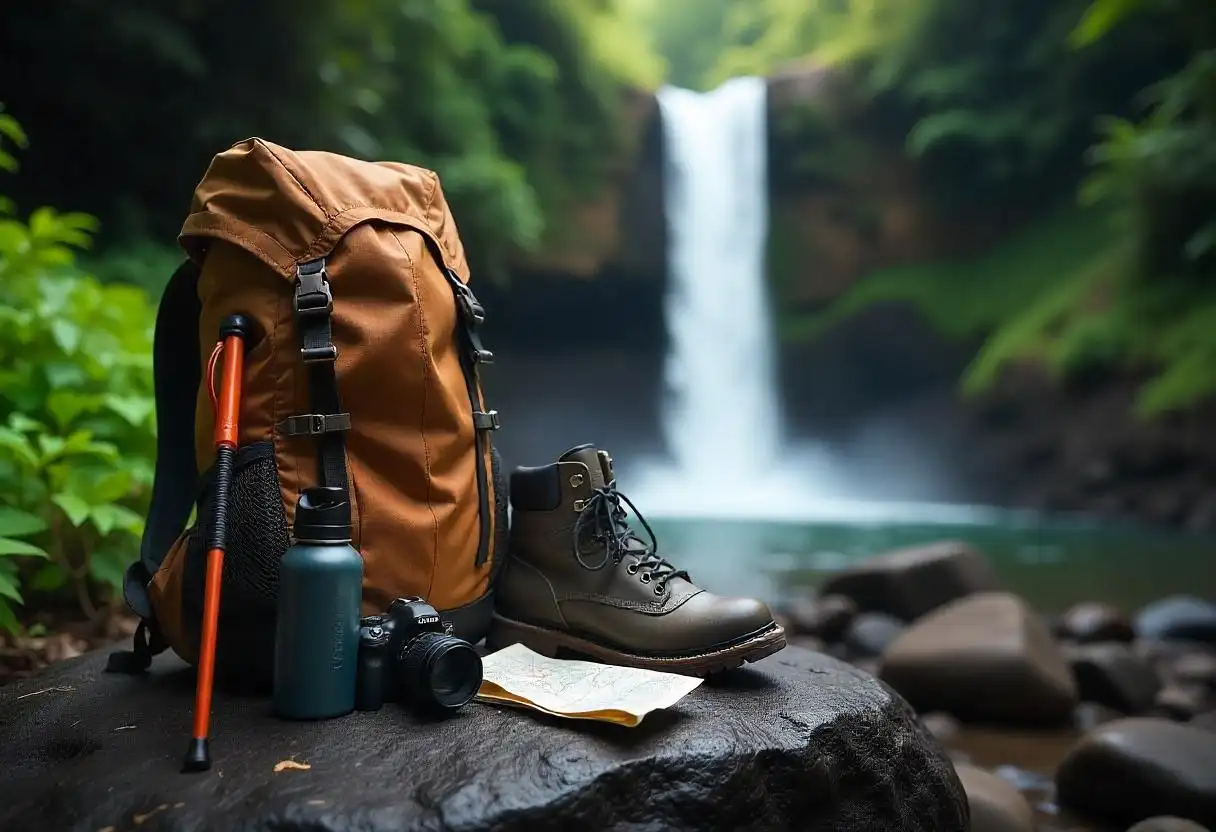
Getting ready for Maui’s waterfall hikes, like Hike Maui, means packing the right stuff. The right travel gear keeps you safe and comfy on trails like Supply Trails. Start with an essential gear checklist made for your amazing adventure.
Don’t forget a collapsible trekking pole set for steep parts near Ridge Trail. Leave the big stuff behind—Maui’s hiking equipment rentals are easy to find near public parking.
Wear moisture-wicking base layers and quick-dry pants for wet moments near freshwater pools. Choose water-resistant boots over sandals near stream crossings. Bring a light rain jacket for sudden rain in tropical rainforest areas.
Choose sustainable travel options like biodegradable sunscreen and reusable gear for safety in mind.
Carry 2-3 liters of water per person for trails like miles roundtrip. Use a portable filter for safe stream water near pristine rainforest. Pack snacks like trail mix and banana bread in reusable containers to reduce waste.
“Always check trailhead kiosks for real-time water source updates near limited parking.”

Exploring Maui’s waterfalls, like Punalau Falls, begins with smart planning. Many trails have limited parking. So, finding convenient parking spots is crucial.
Here’s how to travel smoothly:
“Early birds get the best parking spots—plan to arrive 30 minutes before sunrise at popular trails like Waihee Ridge Trail.” – Maui Hiking Guide
For rough roads like the Road to Hana, rent a 4WD rental car. Don’t park roadside parking unless it’s allowed; fines are steep.
Try these tips:
| Type | Availability | Tip |
|——————|——————–|————————————–|
| Public Parking | High demand | Arrive early or use the nearest town option |
| Roadside Parking | Rarely permitted | Check signs before stopping |
| Shuttle Services | Year-round | Book through trusted companies like Hana Palolo Shuttle |
Helicopter tours give you aerial adventure of waterfalls like Waiʻaleʻale Crater for $200–300 per person.
Combine these with shuttle services for a hassle-free trip to inaccessible valley spots. Use GPS to plan routes and avoid one-lane bridges during busy flight times.
Maui’s waterfall trails, from Hike Maui to West Maui, are a canvas of unforgettable memories. Every hike paints a vivid story with spectacular views.
Whether you’re following the Road to Hana or venturing to remote waterfalls like Honokohau Falls, the island’s stunning beauty awaits with lush landscape.
Each trail, from the easy Twin Falls stroll to the challenging Pipiwai journey, offers moments that stay with you long after your visit, like the 270-foot tall waterfall at Waimoku.
These hikes aren’t just paths—they’re gateways to tranquil beauty and encounters with nature’s raw power, including waterfall accessible spots.
Every step along Maui’s top hikes with waterfalls rewards you with sights like Waimoku Falls’ pool for swimming or the misty vistas of Makahiku Falls.
Remember to hike responsibly: stay on trails like Halemauu Trail, avoid swimming in unsafe spots near potential for flash flooding, and leave no trace. These practices ensure future explorers can also enjoy the island’s spectacular views and cultural heritage tied to Hawaiian history.
Plan your itinerary using this guide’s tips, then share your stories with affiliate links. Post photos of your discoveries near Kaanapali Beach and inspire others to explore respectfully.
Whether you seek the tranquil pools of Upper Waikani or the dramatic cliffs framing Honokohau Falls, Maui’s waterfall exploration promises unique, personal discoveries across the Hawaiian islands.
Top hikes include the Pīpīwai Trail to Waimoku Falls and the easy Twin Falls hike on the Road to Hana. Honokohau Falls offers stunning views. Each hike is different, so there’s something for everyone, from easy-access waterfalls to challenging hikes.
Yes! The Twin Falls hike is great for family visitors. It’s easy and fun. Iao Valley State Park also has trails that are perfect for families, leading to beautiful waterfalls like the Valley State Park Waterfall.
The wet season, from November to March, is best for seeing waterfalls at their peak with lots of water. But, the dry months are good for swimming and avoiding crowds near pristine beach areas.
Yes! Watch out for flash floods, especially during heavy rains—a key safety concern. Always check the weather first. Be careful near cliffs and in waterfall pools, as currents and hidden rocks can be dangerous near 100-foot waterfall sites.
Many pools, like those at Puaa Kaa Falls, are safe for swimming. But, always check the water and ask locals about safety considerations first. Be careful in unfamiliar waters near lush greenery.
Bring sturdy shoes, lots of water, snacks like banana bread, sunscreen, and insect repellent. A waterproof bag is also a must for stream crossings. If swimming, don’t forget water shoes and a towel for freshwater pools.
Yes, many guided tours focus on the best waterfall hikes. They offer insights into Hawaiian history and safe hiking along scenic drives. They also provide transportation, making it easy for visitors to reach remote waterfalls.
Makamakaole Falls on the Waihee Ridge Trail and Iao Valley State Park’s seasonal waterfalls are hidden gems. They’re less crowded but offer amazing views and unforgettable experiences.
Learn about Hawaiian water and waterfall culture. Practice “leave no trace” and respect private waterfalls. Being mindful helps preserve these beautiful places for the future, tied to fascinating history.